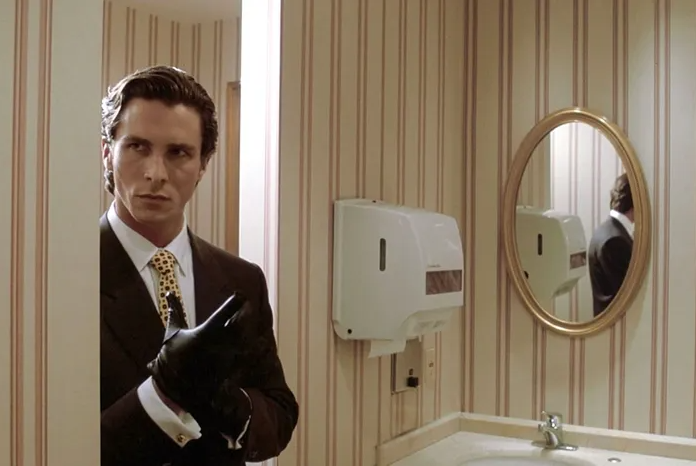“The Cinema is truth, 24 frames per second.”
— Jean Luc Godard
American Psycho isn’t a story about just one person, despite the self-absorption and fragile overconfidence of its protagonist. It’s more a story about a society.
To save you the suspense, if you’re looking for something truly terrifying to keep yourself awake at night, look elsewhere. On the other hand, if you can find yourself a dark theatre in which to watch this impenetrably dark film, you’ll find yourself in the perfect place to catch a few hours’ sleep.
All of Us Strangers is a truly impressive piece of work, vibrant and cohesive and thematically laser-focused even given—or perhaps despite—the laconic ease with which it seems to float, listless, through the story. Delightfully queer and exquisitely elusive, it is a profound exploration of emotional loss, deflection, and abandonment.
Blade Runner is remarkably insightful in its expression of a simple idea: that empathy—the ability to put one’s self in the shoes of another—is somehow fundamental to what it is that makes us human. Any animal can dominate others, any animal can engineer a measure of order and habit and hierarchy. These are not higher-order mechanisms. But empathic responses? That is a rarer thing.
Contemporary cinematic offerings tend so much to the median—the relentlessly, anxiously safe—that the sense of wonder, scale and thoughtfulness which permeates Interstellar becomes a rare spectacle indeed.
One interesting element of Blade Runner’s variegated visual feasts is the spacial contrasts between different locations, or the same space at different times.
At some point during my various efforts to discuss various films (specifically, but this might also apply to other subject matter), I realised that the material fell into a couple of distinct categories.
I was reflecting on Fight Club recently, while thinking about the kind of philosophy of life which I developed early in my adulthood; one which was significantly influenced, I think, by this particular film.
I will admit to a sniggering, presumptuous distraction upon my first viewing of Calderone’s Return, Part II which disabled my ability to perceive many of even its most basic themes and motifs. It is a valuable lesson not to underestimate the subject of one’s criticism.
If I was to make the same kind of over-inflated, indulgent, and bombastic remark about Calderone’s Return, Part II, that Francis Ford Coppola made about Apocalypse Now, it would be: ‘this show isn’t about the 1980s — it is the 1980s.’
Rebecca de Mornay’s extraordinary character, Sabine, is the one exception to the two-dimensional tropes which embody the other female characters. She is the only woman in the film with real purpose, or character, since she has actual reason to behave the way she does.












